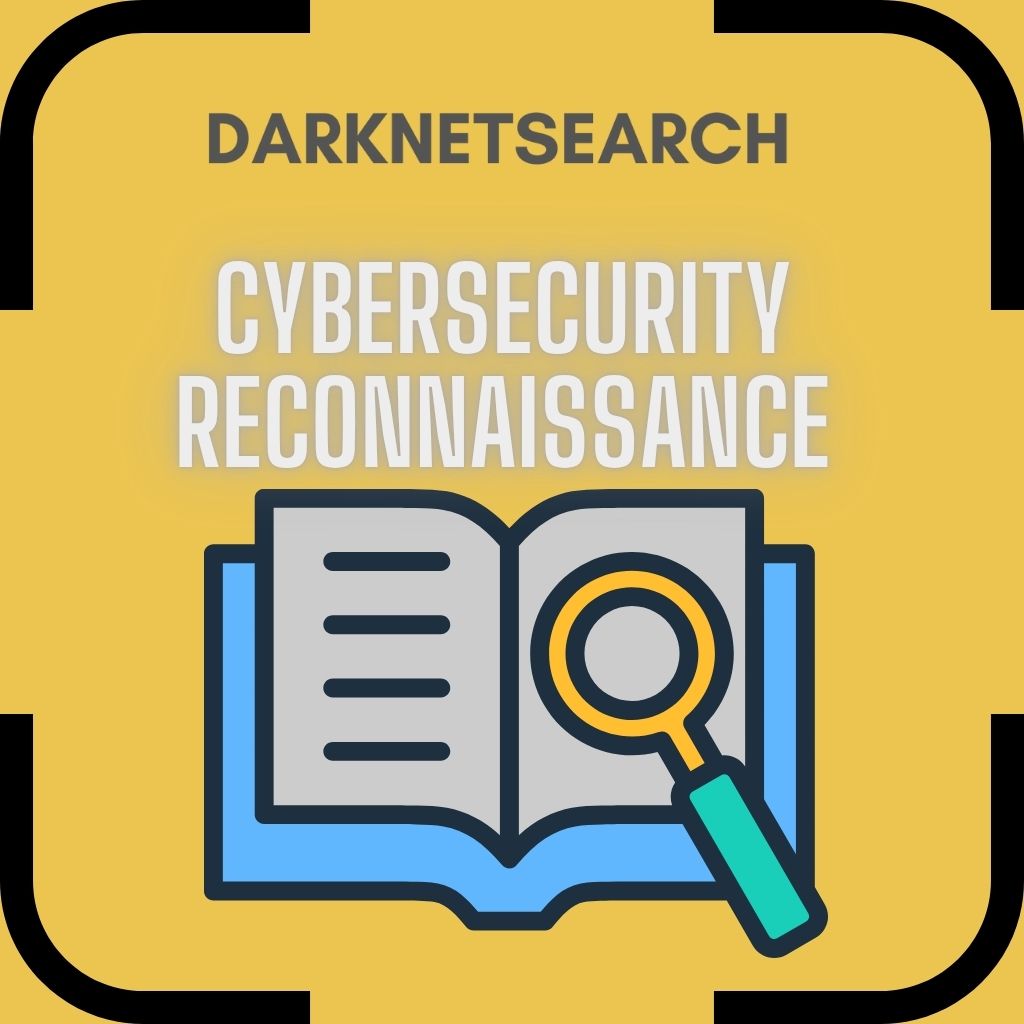➤Summary
What is Cybersecurity Reconnaissance?
In the ever-evolving landscape of cyber defense, cybersecurity reconnaissance plays a critical role in understanding how attacks begin. Before launching any exploit or intrusion, hackers engage in a process known as reconnaissance, collecting valuable information about networks, systems, and users. This early phase helps them find vulnerabilities to exploit. By learning how reconnaissance works, organizations can better anticipate threats and strengthen their digital perimeter. 🧠 Understanding this invisible battle of information gathering is essential to stop cyberattacks before they happen.
What Is Cybersecurity Reconnaissance?
Cybersecurity reconnaissance (primary keyword) is the process of gathering information about a target system, organization, or network before attempting an attack. Just like military intelligence, this step allows cybercriminals to identify weaknesses without being detected. Reconnaissance is typically divided into two categories:
-
Passive reconnaissance, where attackers collect publicly available data such as domain records, social media, or leaked credentials.
-
Active reconnaissance, where they directly interact with systems using scanning tools or probes to detect open ports, misconfigurations, or exposed services.
Both methods provide insights into the target’s infrastructure, helping hackers plan precise and effective attacks. 🔐
Why Is Reconnaissance Important in Cybersecurity?
Reconnaissance is not inherently malicious — cybersecurity teams also use it for threat hunting and vulnerability assessment. Ethical hackers and red teams perform controlled reconnaissance to evaluate the strength of a company’s defenses. The difference lies in intent: attackers aim to exploit, defenders aim to protect.
By simulating cybersecurity reconnaissance, organizations can uncover the same weak points that criminals might exploit. This proactive approach allows companies to patch vulnerabilities before real attacks occur. 💡
The Stages of Cybersecurity Reconnaissance
To understand how reconnaissance unfolds, let’s break it down into key phases commonly observed in cyberattack lifecycles:
-
Target Identification: Selecting a victim — a company, IP range, or domain — often using tools like WHOIS databases or Google Dorking.
-
Information Gathering: Collecting data from public sources (emails, employee details, DNS records, etc.).
-
Network Scanning: Using tools such as Nmap or Shodan to detect active devices and open ports.
-
Service Enumeration: Identifying what software or version runs on each system.
-
Vulnerability Mapping: Matching discovered assets with known security flaws.
-
Data Analysis: Compiling all information to prepare the actual attack.
Each stage brings hackers closer to understanding the target’s environment — knowledge that can make or break a cyber intrusion.
How Attackers Use Reconnaissance
Attackers use reconnaissance to minimize risk and maximize precision. For example, they might analyze employee LinkedIn profiles to find internal software names or email formats. From there, phishing campaigns become highly personalized and more likely to succeed.
They may also monitor websites or leaked data repositories to identify exposed credentials. Platforms like DarknetSearch.com often uncover large amounts of publicly leaked information, including usernames and passwords — data that attackers use to infiltrate networks undetected. ⚠️
Once they gather enough intelligence, hackers proceed to exploit vulnerabilities or deploy malware, often without triggering alarms.
The Connection Between Reconnaissance and Threat Intelligence
Modern cyber threat intelligence relies heavily on understanding reconnaissance activity. Analysts track attacker behavior patterns — IPs, scanning signatures, or domain lookups — to predict potential breaches. By correlating these data points, defenders can detect early indicators of compromise (IoCs) before a full-scale attack unfolds.
Organizations that leverage tools like dark web monitoring and attack surface discovery (as offered by DarknetSearch.com) gain visibility into potential reconnaissance activities targeting their brand. 🔭
Common Tools Used in Cybersecurity Reconnaissance
Both ethical hackers and cybercriminals use a variety of tools to gather intelligence. Some popular ones include:
| Tool | Purpose |
|---|---|
| Nmap | Network mapping and port scanning |
| Shodan | Search engine for Internet-connected devices |
| Maltego | Data correlation and relationship mapping |
| Recon-NG | Modular reconnaissance framework |
| theHarvester | Collects emails, domains, and metadata |
| Google Dorking | Finds hidden or sensitive data indexed by Google |
These tools are not inherently illegal; their misuse defines whether reconnaissance becomes an attack.
Real-World Example of Reconnaissance in Action
In 2023, a major European energy company suffered a data breach that began with a simple DNS enumeration scan. Attackers identified outdated subdomains hosting internal portals. Within weeks, they exploited weak authentication mechanisms to access corporate data.
The post-incident investigation revealed that the attackers spent nearly two months in reconnaissance mode, silently mapping the infrastructure without being noticed. This underscores a key lesson: even low-impact probing can precede devastating intrusions. ⚡
How to Detect Reconnaissance Attempts
Detecting reconnaissance early can drastically reduce cyber risk. Here are key indicators to monitor:
-
Unusual port scanning activity
-
Repeated failed login attempts from unknown IPs
-
Frequent requests to non-existent URLs or admin paths
-
DNS queries targeting internal domains
-
Unexpected traffic spikes during off-hours
Modern Security Information and Event Management (SIEM) systems can correlate these signals and alert defenders in real time. 🛡️
Practical Tips: How to Prevent Reconnaissance
Here’s a quick checklist for mitigating reconnaissance activities:
✅ Limit public exposure of sensitive infrastructure data (hide IPs, internal domains)
✅ Implement Web Application Firewalls (WAFs) to block scanning attempts
✅ Regularly update DNS and WHOIS privacy settings
✅ Use intrusion detection systems (IDS) for early warnings
✅ Train employees to minimize social media oversharing
✅ Conduct red-team exercises simulating reconnaissance
Following these steps won’t eliminate attacks, but it can make reconnaissance significantly harder for adversaries.
Expert Insight
According to cybersecurity expert Bruce Schneier, “Security is a process, not a product.” Reconnaissance embodies this idea perfectly — the process of constant observation, both by attackers and defenders. Organizations that adopt a continuous monitoring mindset can anticipate threats before they escalate. 🌍
Ethical Reconnaissance: The Defender’s Advantage
Cyber defenders also perform ethical reconnaissance during penetration tests. By mirroring the same tactics as hackers, they uncover misconfigurations, exposed assets, or vulnerable APIs. This technique is crucial for sectors like finance, healthcare, and government, where compliance demands proactive risk management.
Platforms like DarknetSearch.com empower defenders with data breach detection and domain spoofing analysis, offering visibility into how threat actors perform reconnaissance against their brand. 🔎
Cybersecurity Reconnaissance Techniques for 2025
As we move into 2025, cybersecurity reconnaissance techniques are becoming increasingly sophisticated. Attackers now use AI-driven data mining, social engineering automation, and deepfake impersonation to gather intelligence faster than ever.
At the same time, defenders leverage machine learning to identify anomalies in network behavior, detecting reconnaissance patterns before exploitation occurs. The arms race between offense and defense continues — and understanding reconnaissance remains the first step to staying ahead. 🤖
FAQ: Common Questions About Cybersecurity Reconnaissance
❓ What is the purpose of reconnaissance in cybersecurity?
To collect information about a target before launching an attack, identifying vulnerabilities and weak points.
❓ Is reconnaissance illegal?
Reconnaissance itself isn’t illegal if performed ethically (with permission). Unauthorized scanning or probing, however, violates most cybersecurity laws.
❓ How can companies defend against reconnaissance?
By monitoring network activity, hiding infrastructure data, training employees, and deploying advanced detection systems.
Conclusion
Cybersecurity reconnaissance is both a threat and an opportunity. For attackers, it’s the foundation of every successful intrusion. For defenders, it’s a chance to detect danger before it strikes. Organizations that understand and monitor reconnaissance activity gain a crucial advantage in the cyber battlefield.
Remember: awareness is the first defense. 🔐
➡️ Discover much more in our complete cybersecurity guide at DarknetSearch.com
➡️ Request a FREE demo NOW to see how real-time dark web intelligence can protect your organization
Your data might already be exposed. Most companies find out too late. Let ’s change that. Trusted by 100+ security teams.
🚀Ask for a demo NOW →Q: What is dark web monitoring?
A: Dark web monitoring is the process of tracking your organization’s data on hidden networks to detect leaked or stolen information such as passwords, credentials, or sensitive files shared by cybercriminals.
Q: How does dark web monitoring work?
A: Dark web monitoring works by scanning hidden sites and forums in real time to detect mentions of your data, credentials, or company information before cybercriminals can exploit them.
Q: Why use dark web monitoring?
A: Because it alerts you early when your data appears on the dark web, helping prevent breaches, fraud, and reputational damage before they escalate.
Q: Who needs dark web monitoring services?
A: MSSP and any organization that handles sensitive data, valuable assets, or customer information from small businesses to large enterprises benefits from dark web monitoring.
Q: What does it mean if your information is on the dark web?
A: It means your personal or company data has been exposed or stolen and could be used for fraud, identity theft, or unauthorized access immediate action is needed to protect yourselfsssss.

